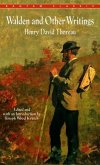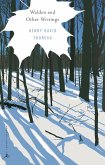When cartographers recounted Wisconsin's Past and Present in a series of maps, the only civilian opposition mentioned in The Military in Wisconsin was organized in part by Citizens United Against Low Level Flights after the Air National Guard proposed establishing new routes over southwest Wisconsin and eastern Iowa to train jet fighter pilots in low-level, high-speed flying.
Diverse groups and individuals participated in the Guard's Environmental Impact Study by writing letters citing specific problems that had already been caused by slow, low-flying transport planes or loud military jets that would cause problems in the future. Most opponents were long-time residents; a few were pacifists. Opponents included area farmers whose dairy cows and other animals spent much of their time grazing in small pastures. Five hundred Amish in southwest Wisconsin signed a letter to the military objecting to the fear that low-flying jet planes might cause their horses and danger to the passengers in the buggies the horses were pulling.
On the night after the worst snowstorm of that winter, the first organized public meeting drew hundreds of residents; it also drew aides to both of Wisconsin's U.S. Senators and our congressman. At other public meetings for more than a year, and appearances at local festivals during the record-breaking heat of the summer, many showed up, but hardly anyone agreed with the Guard's proposal. In areas where jets might fl y low, government officials and wildlife and political organizations passed more than 100 resolutions of opposition, only sometimes at the urging of CUALLF.
Though otherwise supportive of the military, Senators Russ Feingold and Herb Kohl had been somewhat wary of this proposal even before it was made public. What would it take to make their opposition more certain, and would this opposition cause the Guard to withdraw the proposal?
Diverse groups and individuals participated in the Guard's Environmental Impact Study by writing letters citing specific problems that had already been caused by slow, low-flying transport planes or loud military jets that would cause problems in the future. Most opponents were long-time residents; a few were pacifists. Opponents included area farmers whose dairy cows and other animals spent much of their time grazing in small pastures. Five hundred Amish in southwest Wisconsin signed a letter to the military objecting to the fear that low-flying jet planes might cause their horses and danger to the passengers in the buggies the horses were pulling.
On the night after the worst snowstorm of that winter, the first organized public meeting drew hundreds of residents; it also drew aides to both of Wisconsin's U.S. Senators and our congressman. At other public meetings for more than a year, and appearances at local festivals during the record-breaking heat of the summer, many showed up, but hardly anyone agreed with the Guard's proposal. In areas where jets might fl y low, government officials and wildlife and political organizations passed more than 100 resolutions of opposition, only sometimes at the urging of CUALLF.
Though otherwise supportive of the military, Senators Russ Feingold and Herb Kohl had been somewhat wary of this proposal even before it was made public. What would it take to make their opposition more certain, and would this opposition cause the Guard to withdraw the proposal?
Dieser Download kann aus rechtlichen Gründen nur mit Rechnungsadresse in A, D ausgeliefert werden.









